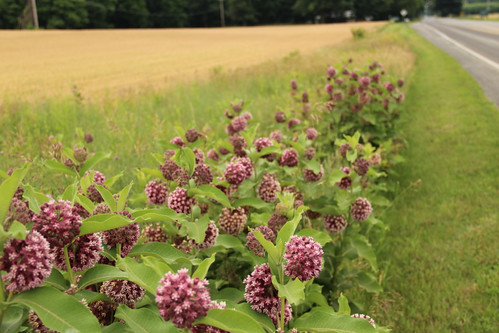Milkweed is very important for monarchs. It is the only plant that the larvae can eat. The female monarch will lay her eggs under the leaves of milkweed plants. After the caterpillar hatches, it will eat different parts of the milkweed plant until it is a big caterpillar and it is ready to turn into a beautiful butterfly.
Insecticides are another reason for a decline in monarchs. Unfortunately, insecticides are incorporated into GMO crops. Since monarchs have a preference to feed on milkweed plants found in agricultural fields, the pollen from GMO crops that are growing nearby can fall on the milkweed plants and affect the monarch caterpillars.
Researchers found found that monarch caterpillars exposed to a dose as low as 1 part per billion can have some affect on them. The effects that they observed in the caterpillars were caterpillar weight, caterpillar size and caterpillar survival. They also found the lethal dose (where you would expect 50% or more of caterpillars to die) to be 15 parts per billion.
Latham, J. (2015, April 4). New Research Links Neonicotinoid Pesticides to Monarch Butterfly Declines. Retrieved April 12, 2016, from https://www.independentsciencenews.org/news/new-research-links-neonicotinoid-pesticides-to-monarch-butterfly-declines/

Here's hoping the monarchs will continue to flourish and survive!
ReplyDelete